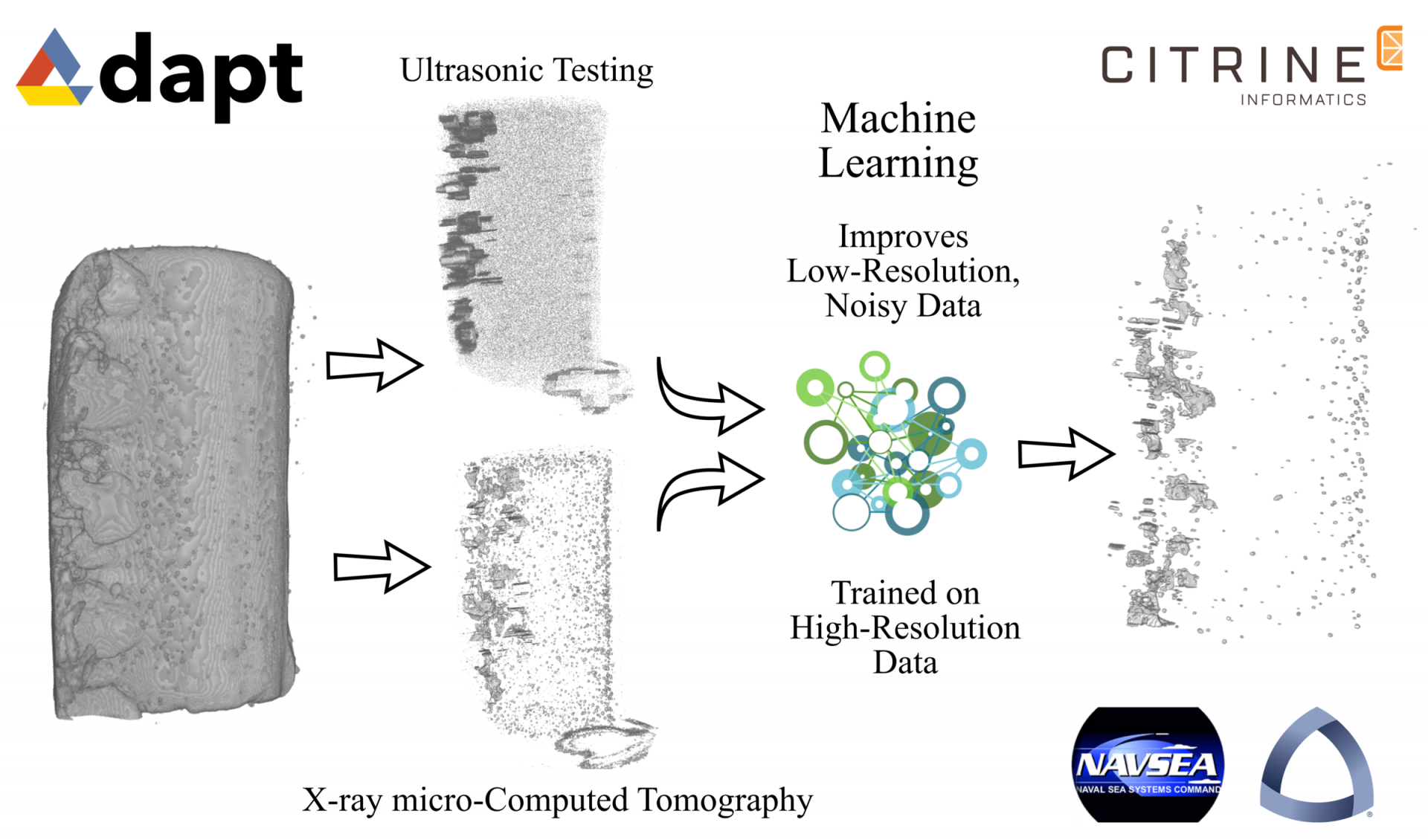Earlier this year, ADAPTSM and Citrine Informatics completed Phase I and applied for Phase II funding for ongoing research for the Naval Sea Systems Command (NAVSEA), the largest of the U.S. Navy’s five systems commands. With 74,000 civilian, military and contract support personnel, NAVSEA engineers, builds, buys and maintains the Navy’s ships, submarines and combat systems.
Since it is impractical to use high-fidelity, destructive instruments to analyze additively manufactured parts in the field (e.g., micro X-ray computed tomography, electron microscopy, tensile testing, etc.), the program’s research is focused on developing a machine learning platform that correlates statistics from such high-fidelity, destructive test results with signals from low-fidelity, nondestructive test approaches. When completed, this platform will provide Navy personnel in the field a reliable way to evaluate new or in-service parts to determine if they are at risk of failure and/or to determine the expected life remaining on additively manufactured parts.
Phase I showed that the platform can automatically upload and analyze mechanical testing and X-ray computed tomography (XCT) data, and that models can be built to statistically determine the effects of pore defects on the strength and stiffness of AM Inconel 718 samples. It also laid the foundation to generate and incorporate nondestructive ultrasonic and radiographic testing data, as well as fatigue performances, into the statistics-based framework.
The model will enable fast, predictive evaluation of the quality of AM-built parts, when they are printed and as they degrade in service, using nondestructive methods. It will be created using machine learning to establish relationships between low-fidelity, nondestructive tests and high-fidelity, destructive tests.
Phase I began with completing XCT and mechanical property characterizations, generating nondestructive test data, and training XCT-ultrasonic and radiographic models for Inconel 718. It is proposed to expand the framework to quantify effects of defects in other alloy classes like titanium and stainless steel, and other types of defects, such as grain size, texture and dislocation morphologies.
The proposed three-year continuation program’s final deliverable will be a web-based software platform that will generate and update models for Navy engineers to transform raw nondestructive testing data into quantitative prediction of part performance in minutes, with visualization and plotting tools to report the information. This tool will also be available to ADAPT member companies for use and critique as it is being developed through the adapt.citrination platform.
